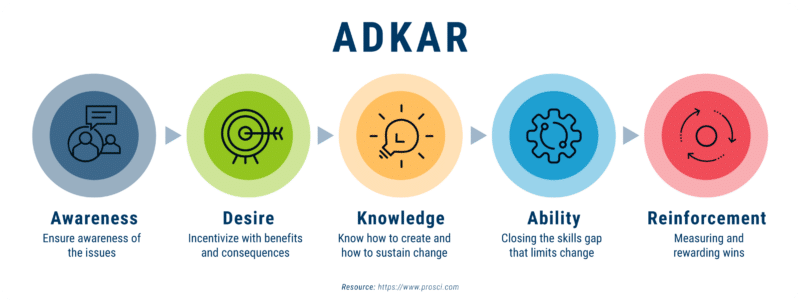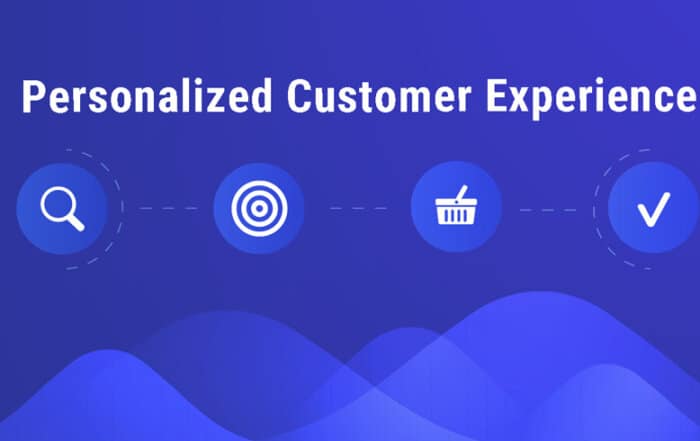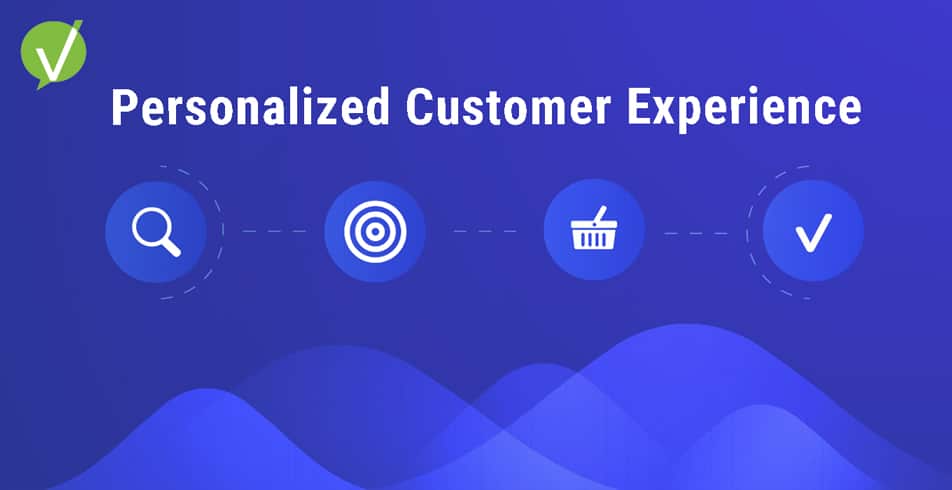What is Change Management & Why It Matters
Introduction
Change is a constant in any business, and managing change effectively is critical to an organization’s success. Change management is the process of guiding individuals, teams, and organizations through transitions. Successful change management involves a well-defined strategy that enables businesses to manage change efficiently, minimize disruptions, and achieve effective outcomes.
Change management involves a structured approach that can help businesses handle change initiatives in a structured and efficient manner. A sound change management strategy can reduce confusion, minimize resistance to change, and allow individuals and teams to change to a desired outcome. The change management process is separate from the core operational processes of a business and ensures the ability to sustain the change without causing damage to day-to-day operations.
Key Takeaways
- Change management is the process of guiding individuals, teams, and organizations through transitions
- Successful change management requires a well-defined strategy
- A sound change management strategy can reduce confusion, minimize resistance to change, and allow individuals and teams to transition more smoothly
- The change management process is separate from the core operational processes of a business and ensures changes can be implemented without causing damage to day-to-day operations
- Effective change management can help businesses manage transitions more efficiently, minimize disruptions, and achieve effective outcomes
Understanding Organizational Change and the People Side of Change
Organizational change is an essential aspect of modern business. It affects every aspect of a company, from its strategy to daily operations. Change within an organization can be challenging, particularly for the people side of change. Individuals may resist change due to fear of the unknown, loss of control, or lack of understanding. Therefore, Principles of change management must consider the human side of change.
Resistance to change can impede progress, culture shift the project’s success. Understanding how individuals react to change is essential to navigate the people side of change. An individual change management plan designed to help employees cope with adjustments can mitigate resistance. It ensures everyone understands what changes are to come, why they are necessary, and how they will personally adapt to the shift.
Dealing with Resistance to Change
Resistance is a critical factor to address in Change Management, even with a human-centered approach that prioritizes empathy. Change Management must prepare communication plans and training strategies that help employees understand how change benefits them and the company’s goals. Seek to identify why individuals potentially resist the proposed changes and address these concerns in detail, emphasizing how you’ll work to alleviate any fears.
The Prosci ADKAR methodology, a popular change management approach, emphasizes changing individual’s Awareness, Desire, Knowledge, Ability, and Reinforcement to simulate successful individual change. It’s a framework that can help manage the human side of change by ensuring individual readiness and driving adoption among the workforce.

The Change Management Process: A Structured Approach
Managing change in an organization requires a structured approach to ensure that the changes are implemented effectively. This structured approach is known as the change management process. It involves several different change models that guide organizations through the steps necessary to manage change from start to finish.
One of the crucial steps in the change management process is the development of a change management plan that outlines the goals, objectives, and strategies for a successful change initiative. This plan must include a project management plan that identifies timelines, deliverables, and responsibilities.
The structured approach to change includes several change management tools such as stakeholder analysis, impact analysis, communication planning, and training and development planning. These software-supported tools empower organizations to identify those impacted by the changes and effectively communicate the transformations to stakeholders.
Project management plays an important role in managing change effectively. A well-executed project management plan provides a framework for change that ensures all elements are considered and executed in a timely manner.
In conclusion, a structured approach to change management is crucial to implementing successful change within an organization. By utilizing different change models, developing a detailed change management plan, and incorporating project management, organizations can ensure that the changes are implemented seamlessly and achieve the desired outcomes.
Leading Change: The Role of Change Agents
If you want to drive change, you need change agents. These individuals are instrumental in implementing change and guiding an organization through transition periods. At their core, change agents are skilled at influencing people and building relationships. They are also adept at understanding the needs of different stakeholders and leveraging their authority to drive successful change initiatives.
Change Agents:
- Instrumental in implementing change.
- Skilled at influencing people and building relationships.
- Proficient in understanding diverse stakeholder needs.
- Leverage authority to drive successful change initiatives.
Leadership Competency:
- Vital for driving successful change programs.
- Communicate a clear vision.
- Build a coalition of support.
- Navigate potential challenges to achieve goals.
- Ensure organizational leadership supports and drives change through all stages.
Effective Change:
- Requires strong leadership.
- Demands a well-defined change management approach.
- Involves embracing change and propelling it forward.
- Change agents play a crucial role in delivering successful change management programs.
Change management is not just about following a set process – it also requires a unique approach to leadership. Leaders who are competent in enabling change are essential in driving successful change programs. They are able to communicate a clear vision, build a coalition of support, and navigate potentially turbulent waters to achieve their goals. It’s important to ensure your organization has leadership competency in place to support and drive change through all stages.
Overcoming Resistance to Change: Strategies and Best Practices
Change can be difficult, and resistance to change is a common occurrence in organizations. However, with the right strategies and best practices, it is possible to overcome resistance and achieve successful outcomes from change management initiatives.
One essential strategy for overcoming resistance to change is to focus on individual change management. This approach involves understanding the unique needs and reactions of individual employees to change and tailoring strategies accordingly. By investing in individual change management, you can create a more supportive and positive environment that encourages employees to embrace change and adapt to new processes more readily.
Another critical aspect of overcoming resistance to change is investing in comprehensive change management, supported by software solutions. By dedicating resources, time, and attention to change management initiatives with the aid of specialized software, you can create a more structured approach that minimizes confusion and uncertainty. Additionally, software-supported change management plans that consider potential obstacles and risks can effectively mitigate resistance to change.
Finally, best practices in change management can help organizations overcome resistance to change. These practices include effective communication, involving employees in the change management process, providing relevant training and software solutions, and addressing employee concerns in a proactive and transparent manner. By following these best practices, organizations can improve their chances of success in achieving long-lasting and effective change.
Implementing Change: Tools and Techniques
In order to successfully implement change within your organization, you’ll need to utilize a range of effective tools and techniques. This section will outline some key strategies, including:
Change Effort
Managing change efforts is key to achieving your goals. You need to ensure that everyone involved is fully invested in the change process and has a clear understanding of their role in making it happen.
Change Management Tools
Various tools, including project management software and communication platforms, can significantly enhance your ability to manage change effectively. Harnessing the power of these software tools can streamline and optimize the entire change management process.
Change Control
Change control is a vital part of your change management plan. With effective change control, you can manage and track changes, ensuring that everyone is on the same page and that changes are being made in a controlled and measured way.
Communicate Change
Communication is key when it comes to implementing change. You need to keep everyone informed throughout the process, ensuring that there are no unexpected surprises. This can involve everything from regular updates to training and coaching sessions.
By utilizing these tools and techniques, you can ensure that your change efforts are successful and that your organization is able to adapt to ongoing changes in the marketplace.
Sustaining Change: Maintaining Success in a Dynamic Environment
Change is constant, and for businesses to remain successful, they must learn to adapt to ongoing changes. To sustain change, it’s essential to have a well-defined change program in place that can guide your organization through any transition. Such a change program should be adaptive and flexible, taking into consideration the dynamic nature of the business environment.
To effectively adapt to ongoing changes, the essential component is efficient resource management, ideally facilitated by robust software solutions. Allocating resources adequately is critical to supporting your organization throughout transitions, enabling it to overcome potential obstacles, and ensuring the necessary stability for effective change management.
Recognizing the imperative to adapt to ongoing changes is pivotal for sustaining change. Embracing change and implementing adaptive measures can empower your business to proactively stay at the forefront of the industry, gaining a competitive edge by leveraging emerging trends and new opportunities, with the support of adaptable software solutions.
Ultimately, a sustainable approach to change management necessitates long-term commitment, involving continuous adaptation to changes, proficient resource management through software tools, and a well-defined change program to guide your organization through transitions smoothly. In doing so, your organization can thrive in the dynamic and ever-changing business landscape.
Benefits of Change Management: Why Organizations Should Embrace Change
If you want your organization to succeed and stay competitive in today’s rapidly evolving business landscape, you need to embrace change management. Excellent change management can transform how your organization operates, enhance performance, and help you stay ahead of the curve.
For more than two decades, Vivantio has been providing vital tools to clients to help their organizations adapt and thrive in a fast-paced business environment. By investing in change management, you can ensure that your organization is well-equipped to face ongoing challenges and capitalize on emerging opportunities. To find out how Vivantio can help you improve your change management, contact our team today or register for a free demo.













